Gems, Light, and Cosmic Will
By Dennis Klocek 18 min read

Most human beings tend to value thinking as the most powerful human soul capacity because most problems are addressed through some level of thinking. Underneath awake thinking consciousness flows a constant river of will that evades awareness. Will is the force nature uses for changing things. In the human soul, will is the force of change. It is hidden both in nature and in the soul but flows constantly in both when things are changing.
Its hiddenness makes will the least accessible soul force. Will drives the thinking when forming thoughts but is undetectable in the resulting thought. The will to understand something pushes the mind to move like a river through sand but when the understanding manifests, the will to understand is finished. It is then embedded in what is understood. Will then energizes the feelings to instigate a sensation of satisfaction.
When feelings are satisfied the force of will to resolve feelings is exhausted in the satisfaction. In this way, it could be said that this pattern of will is desire. The will desires to move unsettled conditions into completion. But it also moves things that appear completed to begin another round of transformation. Will is the great agent of change in the cosmos.
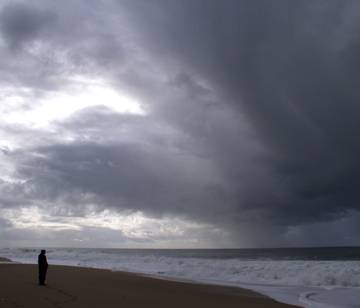
Having such a widespread influence on the way the world phenomena unfold it would appear that will would be very accessible to our awareness. But will is a mysterious force that evades understanding. Like the wind of a great storm the will is a powerful agent of change but is itself invisible. Will is dark to human consciousness and is primarily seen through its results.
By looking at the results of will in the world it is possible to see that will apparently has many different levels of action that unfold in time and space in mysterious ways. It is like an image sometimes used by climatologists to describe the hierarchy of motive forces that contribute to the formation of major storms

Called the “butterfly effect” it is a thought experiment that illustrates non-local effects. Those who ridicule this idea as unscientific do not understand that it is not intended to be a scientific cause and effect explanation but a model for the way cascade effects resonate through time as the fundamental force for change in nature. Cascading will is the wisdom of nature.
The butterfly effect is to imagine a butterfly flapping its wings in a meadow in China Then imagine a small vortex of rising air above it. Now imagine the small vortex connecting to larger vortices of warm rising air that are already forming in that area of the meadow. The new impulse from the small vortex quickens them into resonance creating a larger resonant vortex.
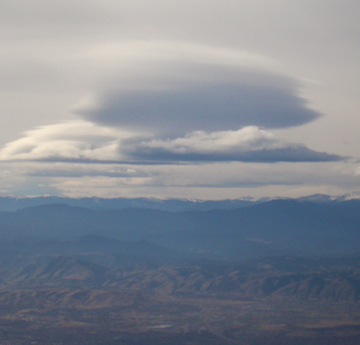
Now imagine the resonant vortex rising up a hill to encounter a larger still resonant vortex forming a cloud in warm air rising in a river canyon in the afternoon. The vortex forming the cloud is a will movement that is getting a resonant boost from the smaller vortex. It in turn presents a resonant impulse to a larger vortex system forming in the mountains. That system gives impulse to a larger pattern over the ocean that grows as it crosses the Pacific. In transit, it meets resonant conditions over the Gulf of Alaska. The resulting cascade of invisible will forces that started in such a small way in the atmosphere eventually manifests as torrential rains on the West Coast of the United States. This line of thought is not intended to be a cause-and-effect meteorological principle. The intent is to illustrate the rhythmic, resonance-seeking qualities of the hidden will forces that create changes in nature. Resonance linked to rhythm is the fundamental principle of cosmic will in nature and personal will in human beings.
At each stage in an event, the will is enhanced by resonant harmonies of patterns that reinforce a small, seed-like will input and make it grow exponentially into a strong force. At each stage, the will towards the growth of the force is ever-present but exists only in potential. Will forces find the resonances in potentials?
Seen this way we could say that the will is somehow linked to time and more specifically how time rhythmically changes small events (such as attraction and repulsion of molecules) that eventually appear in space (as a silica molecule). The will of a butterfly to move becomes the time seed of a very powerful force when rhythmically timed resonances are available for amplification.
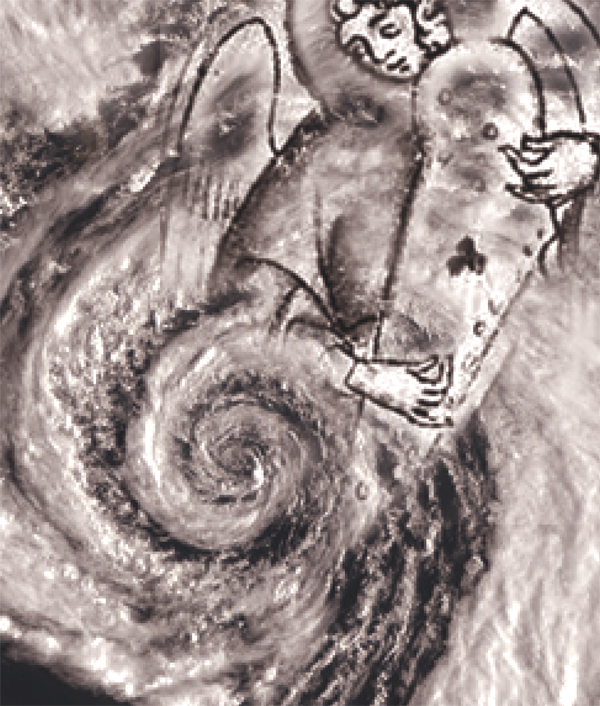
Harmonic resonance in particular rhythmic sequences is the essence of will in nature. A great secret for the will regarding harmonic resonance is that the more modest the initial impulse the more potential there is for finding or adapting to similar resonant structures that can amplify the modest initial impulse. In nature, it is often the smallest entities that carry the greatest potential for both bad and good. In today’s world that would be viruses and the ultramicroscopic liposomal globules created to deal with them. To give an idea of how these principles can be useful for healing it is good to consider the nature of the will in two very different areas of the natural world such as the minerals on one pole and the human will on the other. The everyday, unconscious human will that flows from an individual out to the world is normally driven by a force of desire to attain a particular goal. In desire, the will of the human becomes resonant with the will structure of the intended goal.
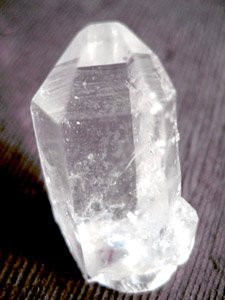
If you want to get a particular quality of quartz crystal your will is not resonant to the will structure of a bucket of sand. Although chemically the two substances are exactly the same. You also would not resonate with the will structure of a windowpane or drinking glass as a substitute for the crystal. If you need a drink your will consciousness is resonant with the will structures that produced the function and form of the drinking glass.
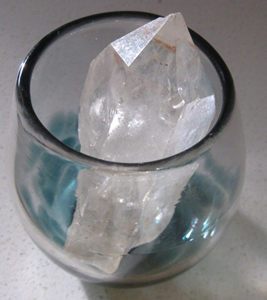
Along with the poet Goethe, we could call the will used in the process of making a drinking glass a “becoming” will structure. Your will resonates with this “becoming” through the intention to act. So substituting a drinking glass “becoming” for the “becoming” of a crystal brings no satisfaction. That sounds odd but speaking purely about will the intent in your will becomes resonant with the specific intent that conceived and made the object. When your own will manifests as a sensation, say thirst, your desire resonates with the sensation and searches for a will structure that has been designed to satisfy that desire.
When the glass is obtained, the resonance between your will and the will invested in the “becoming” of the object causes the personal will impulse of desire to fade. The will structure of the object and the will intention of the human find resonance in you holding the drinking glass. It is possible to bring the “becoming” of a drinking glass into higher consciousness and a good degree of understanding of how it was made. It is more difficult to bring the “becoming” of a quartz crystal into awareness. We could ask what is the “becoming” will structure of a quartz crystal?
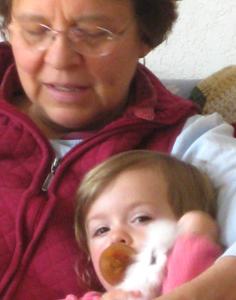
Will in nature is the force that prods things to transform. A crystal has a form that has been highly modified. One wave of metals washes through the rock to be followed by another wave of displacement metals. This will drama takes place as a profound process of countless changes throughout geologic time. By contrast, in the human soul, that same willful urge to change something arises as a fleeting desire; a kind of itch to merge or resonate with something else. It could be lunch or a beloved that is the object of human desire but the will impulse emerges out of a wish or urge to move towards otherness.
Moving the will takes energy. Energy expenditure in will movements creates heat. According to science in the human organism, heat is generated at all levels including the mitochondria within the cytoplasm. These vanishingly small organs metabolize nutrients and generate heat. To do this they utilize mineral nutrients like potassium or calcium by transforming them into nutrient pumps or gates that are the foundation of nutritional assimilation in the body. The transformative energies produced by the untold legions of these minute organs in each cell is the source of body heat and the ability of the organism to ward off infection. It is the action of the mitochondria to regulate the flow of mineral gates and pumps that an interesting commonality exists between the will patterns that nature uses in gem formation and plant nutrition.
GEMS, LIGHT AND COSMIC WILL
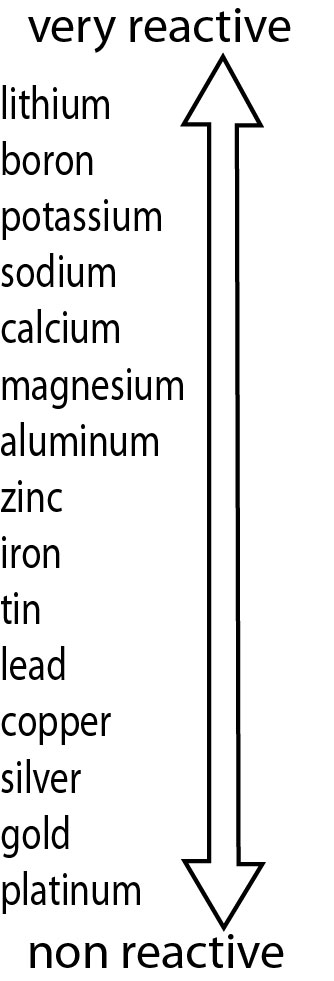
In mineralogy, the principle of the reactive series describes the molecular movements of metals from radically active lithium and boron to the labile selectivity of potassium to the more stable form of calcium and on to nonreactive platinum. These transitions are driven by the selective charges, pressures, salinities, and temperatures of the solutions that are carrying the dissolved metals through the pores of settled masses of what are known as “country rocks”. A loaf of granite is an example of a “country rock”. The solutions pull out metallic ions.

The country rocks become invaded by more liquid and solvent forms of minerals that geologists sometimes call rock milk. The rock milk will likely be more molten than the country rock simply because its metals such as potassium, sodium, iron, or boron are in flux through the invading rock milk solution. These flows of rock milk are pushed through the country rock by pressures that are often the result of movements of large oceanic or continental plates.
These huge pressures cause the migration of water that makes its way through the pores in the country rock masses. High temperatures and pressures with the presence of fluxes lowers the melting points of metals and puts them into a solution where the chemical forces of attraction and repulsion characteristic of the series dominate the way that crystals form or don’t form in the solution.
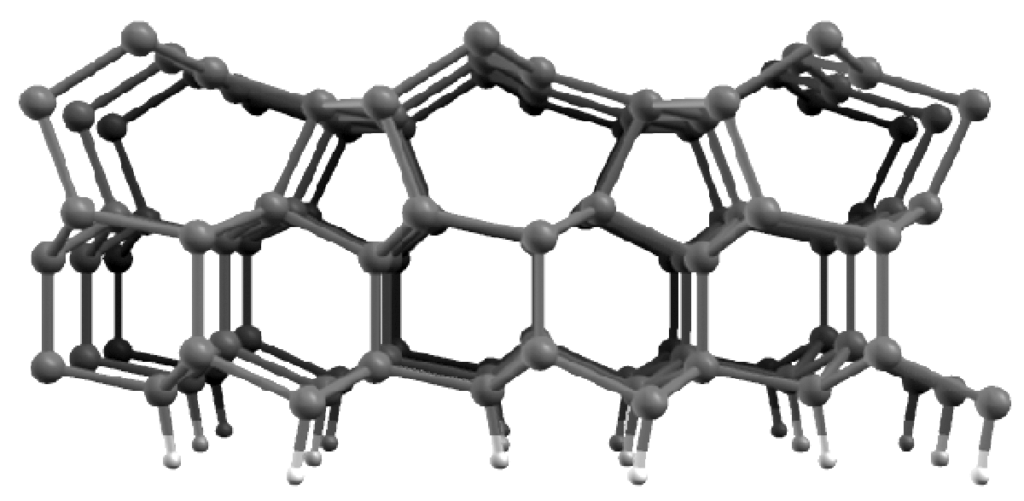
Through intricate dances of what are known as elective affinities, the metals form the geometric bases for crystal formation. At this highly delicate level in geologic structuring gem formation begins. The image shows the geometry of the molecular structure of silica. Solutions turn to gels when the metals like potassium and calcium satisfy particular affinities for spacing and geometric stability. Stability is developed by minerals migrating towards potential geometric configurations in the solution.
These configurations form charge fields often in molten gel-like silicates. The pattern of the charge field becomes the structural characteristic of the gem when its development stops. Colorants and hardness differences arise when the metallic exchange involves replacement metals in the rock milk. Old sea beds in a melt contribute one palette of metals, for instance, rubies; while different formations arise from volcanic dust falling onto electrolytes in rainwater. This pattern leads to opal formation. The different gems have very different origins and paths of development. But we could ask where do the elective affinities of the metals have their origin? In answer to that, it is possible to look at the activities of light.

The understanding that the substances of the earth may have an origin in light energies coming from space is more than two hundred old. In 1814 the Bavarian physicist Josef von Fraunhofer first did the optical experiments that led to the discovery of a complete spectrum of light emission lines from solar and extrasolar light sources.
The lines reveal the presence of particular metals and minerals in the light coming from the Sun and the stars. A spectrograph is an instrument that allows for precise identification of the presence of mineral-like potassium in the light coming from a star. Light from potassium being vaporized has a very specific hue and vibration rate when analyzed. Likewise for sodium, calcium, and the other metals of the electrochemical series.
The harmonics of the wavelength resonance that are present when a substance is made into a gas present a fugue-like musical form for a substance such as sulfur. This means that to science potassium is colored light. The presence of potassium, lithium, boron, iron, silver, and even gold can be seen with a spectroscope in the light of its vaporization. A gem such as amethyst or opal is a musical rendering of wavelengths of light when thought of as the great cosmic harmony.
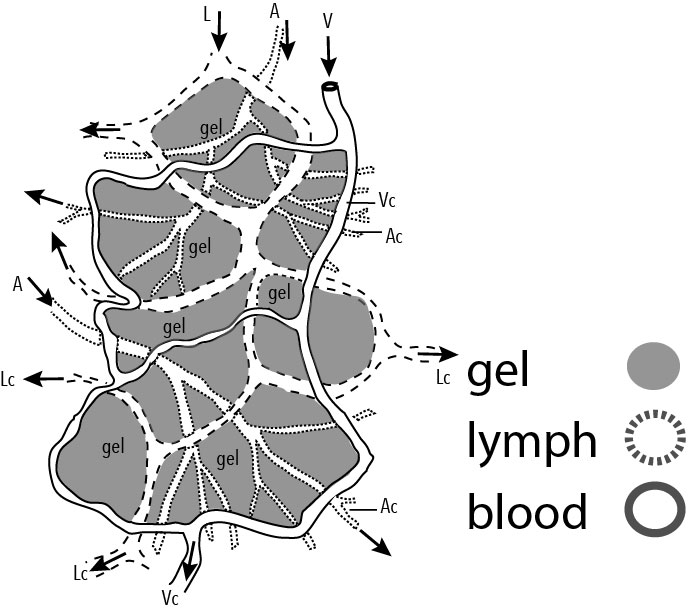
In the human circulatory system, the pulse of the blood from the heart ceases as the blood reaches the capillaries. There the colloidal plasma forms gel matrices of minerals in solution that have the ability to completely change from solid to liquid in response to the content of the fluids moving towards them.
The image shows this area just below the skin known as the extracellular matrix. This colloidal estuary-like organ takes the form of a crystalline gel as islands and channels form in response to tidal flows in the lymph. Blood and lymph do not mix but are intimate in the geometry of the matrix. The matrix is a liquid crystal that allows the blood to have access to the light coming onto the skin.

In human physiology research By Dr. Andrzej Slominski M.D. , Ph.D of the department of dermatology of Freiburg University has shown that the skin has a direct sensory connection between light and human neurology. This is based on pigments and enzymes that are signaling substances for the action of different wavelengths of light. Dr. Slominski and his team have published research that shows that the skin is a sense organ for light, fragrance, color, and warmth. These impulses come from the environment continually interacting with the lymph and blood flow near the surface of the body. These interactions are very subtle but research shows strong hormonal responses to these peripheral light forces.
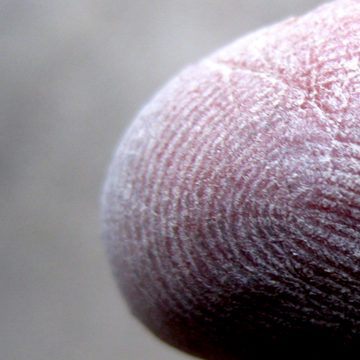
Further, if a gem is ground extremely fine when the gem powder is put in water the finest particles go into an electronic field suspension. The image shows a micro-ground gem in the grooves of a fingerprint. This is accomplished by a series of ever-finer grinding processes. Gems, when ground that fine create delicate colloidal charge fields with other particles when put in fluids.
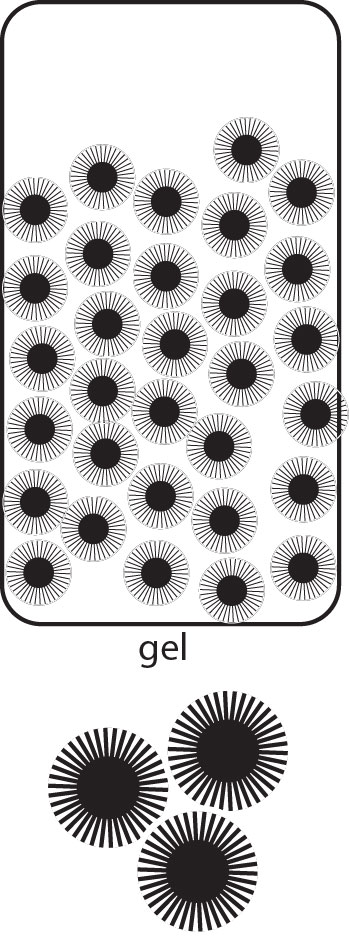
Such a charge field is almost a gel and readily forms colloids in nature. The image shows the linkages present between particles that keep the particles from settling out of suspension. Colloidal charge fields support migratory, ion metal transport in sap flows in plants. The leaf of a living algae is a migratory potassium gel. The algae gel absorbs light through pigments obtained from metals in solution. An algae plant is a living gem.
We could just as well say that cell cytoplasm in a human body is a living gem. The cell material interacts with others through ion transfer of metals in the blood, similar to the geometric gem matrix in a rock mass. The dynamic of potassium and calcium, silica, and iron follow similar lines of affinity whether they are active in ion transfer processes in rock milk, algae growth or human cellular metabolism.
But we could ask what have these molecular migrations to do with light? The phenomenon of coronal discharge can be used as an image of the links between gems and light.
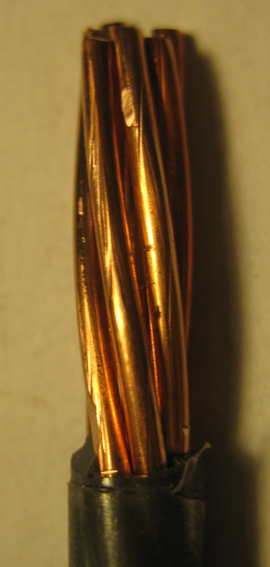
In nature, smooth surfaces hold charges and a points discharge. Any speck of dust on a smooth surface discharges a collected charge. In electric wires current travels along smooth surfaces of a wire and not through the interior. Transmission cables are formed of many small wires. The surface of each small wire carries a charge. Bound together the flow of current is amplified by the many surfaces.
In household wiring, the bundled wires are surrounded by an insulator to prevent arcing. Insulation allows the current to flow unimpeded along the many surfaces. High voltage wires have no covering so the point of a dust particle on a smooth cable surface can be the site of what is known as coronal discharge that can melt the cable and cause a fire.
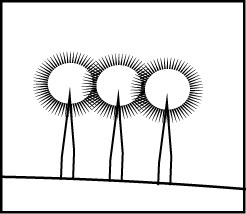
Changes in moisture and temperature determine coronal discharge from the point of a fine dust particle. The image shows the small points reacting to others at their points to create a field of discharge. Research shows that even with a micro voltage load, coronal electron flow from small points of mineral dust can occur simply by changes in temperature or even light. Special conditions are necessary for that to happen involving size, distribution, and composition of the particles.
The smaller the particle the more potential there is for it to be an instigator for a coronal discharge. With an extremely small particle, the shift of even a very small microvolt surface charge is directed to the point of a particle. Often such very small particles can discharge simply by a small temperature fluctuation.
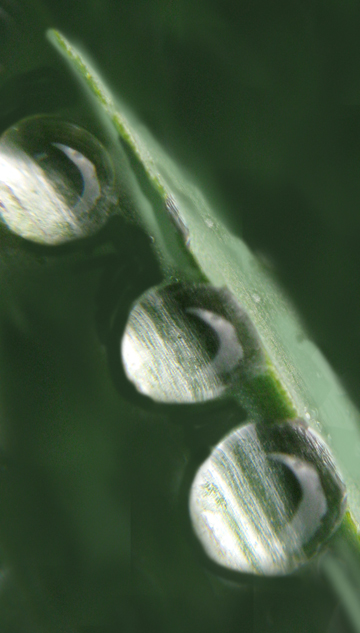
Studies show that a surge in electron flow from the tip of a blade of grass induces dew formation. Other studies of windmill blades have shown that air passing over a surface can instigate coronas with no voltage input. These phenomena have been measured in the microvolt range. In very weak electron flow conditions, minute particles containing metals have discharge potential simply with a change in illumination such as dawn or dusk or even a cloud shadow passing.
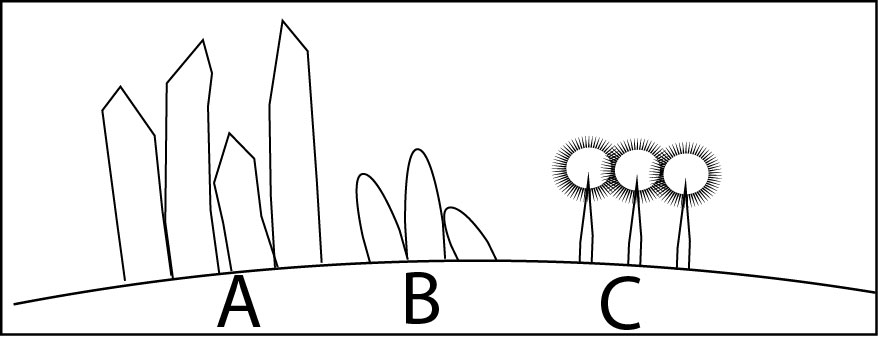
The illustration below shows three sizes of mineral particles on a smooth surface. As changes of light create changes in moisture and temperature on a surface, particles will respond by collecting ionic charges from the surface. The particles in group A are too large, with wide points, and too randomly placed to form a corona. The shifting charges are there but the spacing discourages discharge. The particles in group B are too smooth to bring a charge to a point for discharge. Needlepoints allow for discharge to happen. The particles in group C are like needles. They are small and evenly spaced. This is the ideal condition for corona discharge.
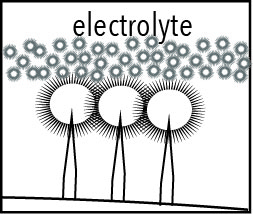
With small changes in temperature and light, evenly spaced micro gems excite weak discharges with each other. They discharge small coronas that create chemically reactive conditions in the air close to the leaf surface. Science recognizes this as an atmospheric aerosol electrolyte.
One corona excites discharges in neighboring particles cascading into a surge of atmospheric electrolyte changes on a leaf. An electron cascade can be instigated by a very small input of temperature changes or even caused by shifts in illumination. No high voltage is necessary for the reaction. Electrolytes are composed of enzymes
Ultrafine ground gems sprayed on leaf surfaces enhance enzymes. Small amounts of micro suspensions can be added to ferments as a modality for delivering micro metal electrolyte complexes to leaf surfaces. The electrolytic metallic forms of the gems are then available for interaction with cell membranes on the surfaces of leaves when included in foliar sprays.

Sunrise and sunset radically change the temperature and moisture environment on leaf surfaces of plants. The use of ultra-fine gems in very fine sprays deposits a very fine film of gem particles on the sprayed leaf. This becomes active when changing environmental conditions stimulate discharge and instigate enzyme chemistry on the leaf surface. This enables plants to get access to potassium, calcium, magnesium, and sulfur in the leaves rather than having to bring these metals up from the roots.
Gems are forms of substance that reveal the beauty and order of the cosmic will. The will of the cosmos is originally present in the light of the stars. That cosmic will becomes an elegant shadow in the forms gems. Gems retain the connection to the cosmic light, and when rendered into micro sizes gem particles still interact with the light coming to earth. When light and shadow interact through space and time micro gems on leaf surfaces can enhance the life of plants.
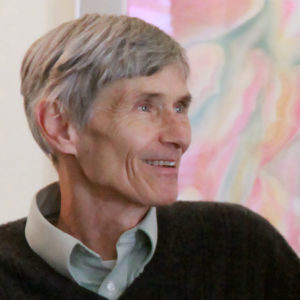
Dennis Klocek
Dennis Klocek, MFA, is co-founder of the Coros Institute, an internationally renowned lecturer, and teacher. He is the author of nine books, including the newly released Colors of the Soul; Esoteric Physiology and also Sacred Agriculture: The Alchemy of Biodynamics. He regularly shares his alchemical, spiritual, and scientific insights at soilsoulandspirit.com.
1 Comments
Leave a Reply Cancel Reply
Similar Writings
Silica and Clay Polarity
Silica is the light pole in the minerals. It is a kind of flowering process in the mineral realm since silica in plant growth enhances the refined properties that light brings to plants. Photosynthesis requires light for its action. The light interacts with the flavonoids (phenols and tannins) and anthocyanins (blue and red pigments that…
Videos: Solar Length of Day and Soil Clock Tutorials
Dennis teaches us about the most important plant rhythm, solar length of day, and how that can be used in planning your planting calendar.
Thanks so much for a wonderful exploration of will and our inner and outer exploration of this energy.
Your work has been and continues to be an inspiration for me as a gardener and phenomenologist. Do you have any thoughts about the Covid virus and our inner light ? meditations to increase immunity ?
Also I guess you have read the work of Gerald Pollack with The Fourth Phase of Water, about the energy qualities of water and their activation.
All together, providing useful visualisations for those who practice BD.
Thanks again
Regards, Pete